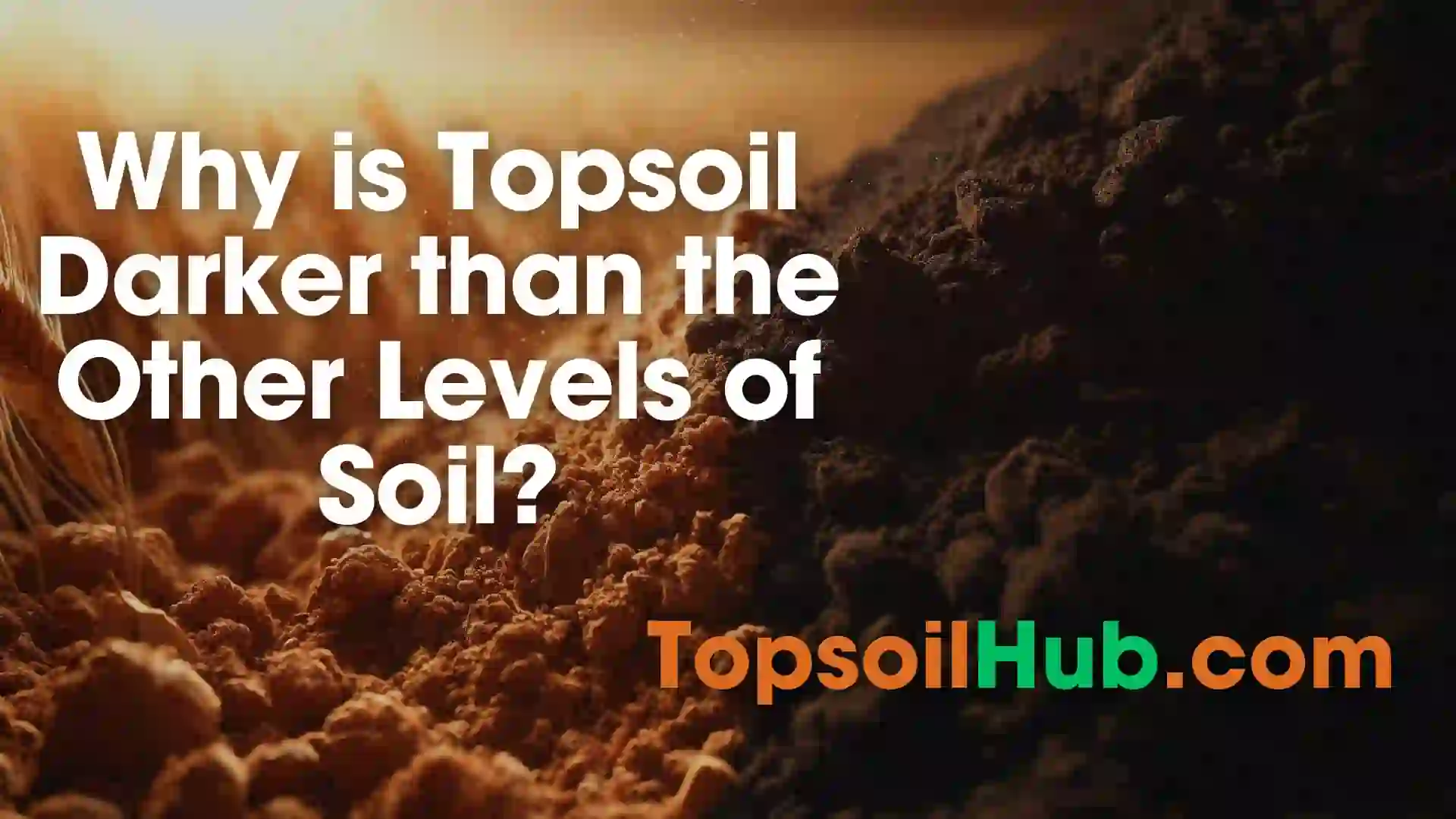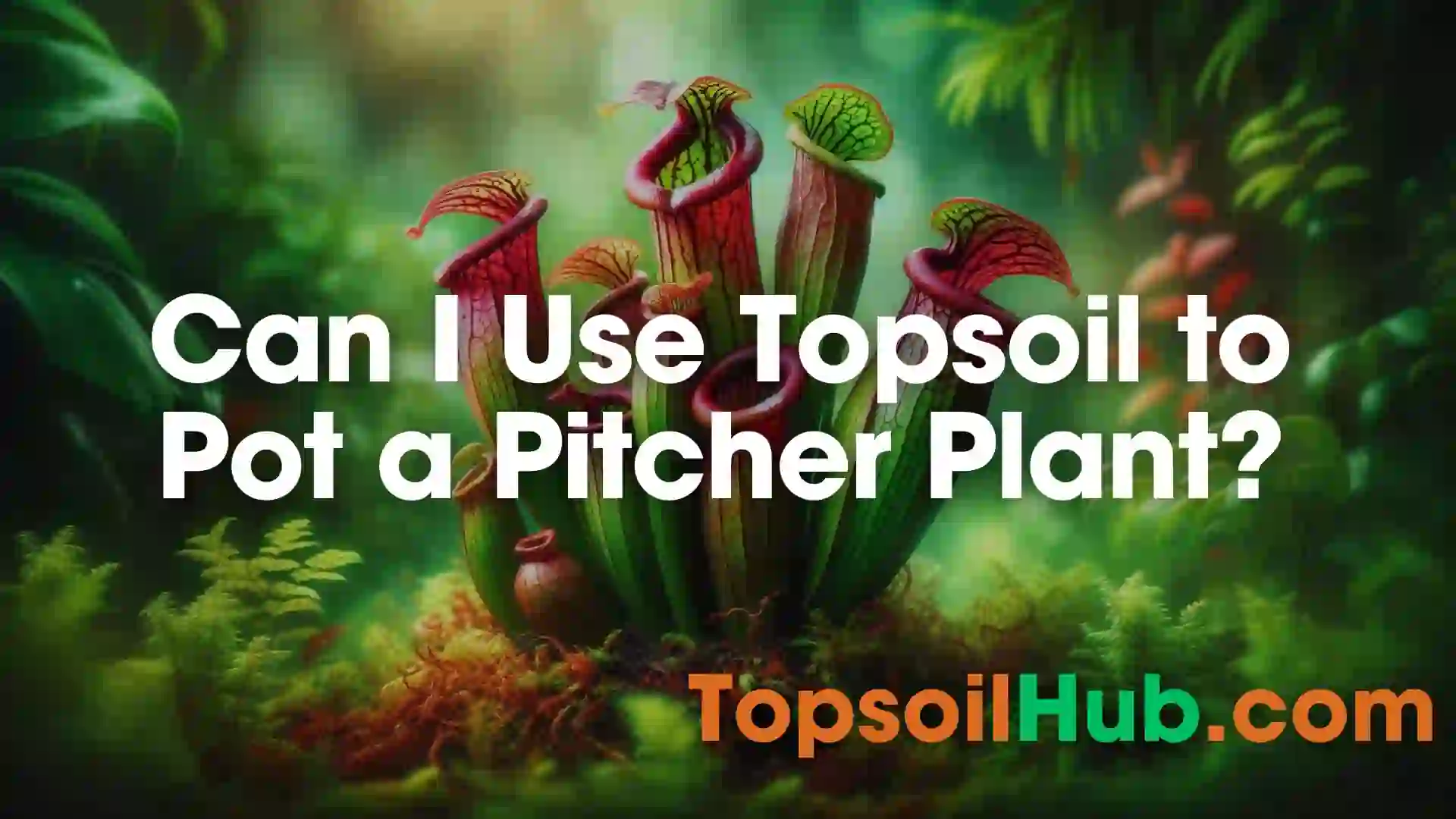Why is Topsoil Darker than the Other Levels of Soil?
Have you noticed the top layer of soil in gardens and parks looks much darker than the soil underneath? This rich, dark color isn’t just for looks – it means the topsoil is healthy and full of nutrients that help plants grow big and strong. In this post, we’ll discuss 5 reasons why topsoil is darker than the other levels of soil. Let’s get started.
Why is Topsoil Darker than the Other Levels of Soil? Quick Answer
Topsoil appears darker than the other levels of soil due to its high organic matter content, active microbial populations, mineral composition, loam texture, and clay particles.
The accumulation of decomposing organic materials, the presence of humus-producing microbes, the oxidation of minerals like iron and manganese, the ideal structure of loam for decomposition, and the ability of clay to absorb dark organic compounds all contribute to the rich, dark coloration of the topsoil layer.
This deep color indicates a healthy, fertile soil teeming with life and essential nutrients to support plant growth. Over time, as more organic matter accumulates and breaks down, the topsoil continues to enrich and darken.
5 Reasons Why is Topsoil Darker than the Other Levels of Soil
Reason # 1. High Organic Matter
Topsoil is packed with organic matter, which includes fallen leaves, remains of dead animals, and waste from tiny creatures like worms and microbes. As plants drop their leaves and roots die off, these materials collect on the soil’s surface. Over time, they are worked into the topsoil by the action of weather and creatures living in the soil.
This accumulation of organic matter significantly darkens the topsoil. The process where these materials break down is called decomposition. As decomposition occurs, it not only darkens the soil but also improves its quality by releasing essential nutrients that help plants grow.
This makes the soil more fertile and better at supporting plant life. Each year, as more organic material adds up and breaks down, the topsoil becomes darker and richer. This cycle is crucial for keeping the top layer of soil healthy and productive, which is important for farming and gardening.
Reason # 2. Microbial Activity
Topsoil is full of life, including many small organisms like bacteria, fungi, protozoa, and nematodes. These tiny creatures are vital because they break down dead plants and animals. This process produces humus, a dark, nutrient-rich substance that’s important for healthy soil.
As they work, these organisms transform leftover plant materials into darker substances, making the soil darker. They also work with plant roots in ways that help the plants get essential nutrients like nitrogen from the soil, which not only boosts plant growth but also adds to the soil’s dark color.
These interactions between microbes and plants help make sure that the soil stays fertile and productive. Moreover, the presence of these microbes ensures a continuous supply of essential nutrients to the plants, promoting a robust ecosystem within the soil.
Reason # 3. Mineral Content
The color of topsoil is greatly affected by its mineral content. Iron and manganese are two minerals commonly found in topsoil. These minerals react with oxygen—a process called oxidation—which makes them change from lighter to darker colors. This reaction helps give topsoil its typically dark appearance.
Topsoil often has more of these minerals than subsoil because lower layers of soil lose minerals through leaching, where water washes them away. As a result, topsoil, with its higher concentration of dark-colored minerals, looks darker.
This abundance of minerals not only impacts the color but also improves the soil’s quality, which is beneficial for plant health. These minerals are essential for the soil’s fertility, helping plants grow strong and healthy.
Reason # 4. Loam Composition
Loam is considered the ideal soil for most plants due to its balanced mixture of sand, silt, and clay. This balance helps loam keep moisture and organic matter, which are key to the soil’s dark color.
As plants and other organic materials break down, they turn into darker substances that enrich the soil. Additionally, loam’s structure allows air to circulate well, which is crucial for the microorganisms that live in the soil and helps break down these organic materials.
The good airflow and ability to hold moisture make loam perfect for supporting a rich, dark layer of topsoil. The decomposition process in loam not only darkens the soil but also enhances its fertility, making it better for growing plants. Loam’s ability to hold nutrients helps nourish plants and keeps the ecosystem productive, contributing further to the darker appearance of topsoil.
Reason # 5. Clay Content
Clay in the soil is made up of very small particles. These particles are great at holding onto things like water and bits of decayed plants, which are important for keeping the soil healthy and dark-colored. Because clay can absorb and keep a lot of these dark materials, it plays a key role in giving topsoil its darker color compared to lower soil layers.
Topsoil usually has more clay than the deeper layers, which tend to have larger particles like sand that don’t hold water and organic material as well. This means that topsoil can hold more moisture and organic compounds, helping it stay darker.
Additionally, the tight packing of clay particles helps the soil maintain its moisture and organic content over time. This ability to retain essential nutrients not only supports plant growth but also keeps the topsoil richly colored and fertile.
Conclusion:
In conclusion, topsoil appears darker than other soil levels due to its high organic matter content, active microbes producing humus, mineral oxidation, loam texture, and clay content that absorbs organic compounds.
This rich, dark color signifies fertile soil ideal for plant growth. To reap the benefits of nutrient-rich, dark topsoil for thriving gardens and bountiful harvests, start building your own compost today.
Collect leaves, grass clippings, and vegetable scraps to create a continuous supply of organic matter that will keep your topsoil dark and fertile for years to come. Share this knowledge with fellow gardeners and motivate them to adopt composting for better soil health.







